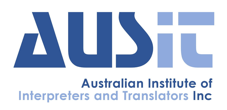RECENT RESEARCH
Researcher: Ran Yi (諘 窴)
PhD supervisors: Professors Sandra Hale and Ludmila Stern, and Dr Natalie Martschuk
Institution: UNSW, Sydney
Imagine being required to appear in court, in a country where you don’t speak the language fluently, or even at all.
Everything that’s said – from the lawyers’ questions and comments to the judge’s decision – is communicated to you through an interpreter. Now, imagine this happening remotely, with technical glitches and language complexities adding to the confusion. How confident would you feel?
Navigating a legal system through an interpreter is already challenging, but remote court hearings raise the stakes even higher. My research dives into this critical issue, exploring how accurately interpreters render lawyer questions when working remotely in Australian court settings.
The study focuses specifically on Mandarin-speaking interpreters, and examines how different interpreting modes (consecutive vs simultaneous) and mediums (audio-only vs audiovisual) affect the delivery of essential speech elements, such as tone, fillers and discourse markers.
Through a mixed-methods approach, we analysed 3,250 minutes of courtroom exchanges, and gathered feedback from 50 participants – including interpreters and legal professionals – via the following research questions:
1: How aware are Australia-based Mandarin–English interpreters of the meaning and significance of manner of speech in court questions and answers?
2: How accurately do interpreters render the manner of speech in court questions and answers during examination-in-chief and cross-examination?

3: Does the mode of interpreting influence the accuracy of the interpretation of the manner of speech in court questions and answers during examination-in-chief and cross-examination?
4: Is there a difference in remote interpreting performance between audio-only and audiovisual input of court questions and answers during examination-in-chief and cross-examination?The findings show that interpreters working remotely often struggle to accurately convey the subtleties of speech, such as pauses or shifts in tone – elements that can shape how testimony is understood, and therefore influence the outcomes of legal proceedings.
These challenges highlight a significant gap in training and guidelines for remote court interpreting, with the potential to compromise procedural fairness. As remote hearings become more prevalent, there is an urgent need for clearer protocols and enhanced interpreter training to ensure that language barriers do not result in miscommunication or unfair trials.
This research contributes to the academic understanding of court interpreting, and also offers practical recommendations for improving interpreter training and courtroom practices.


